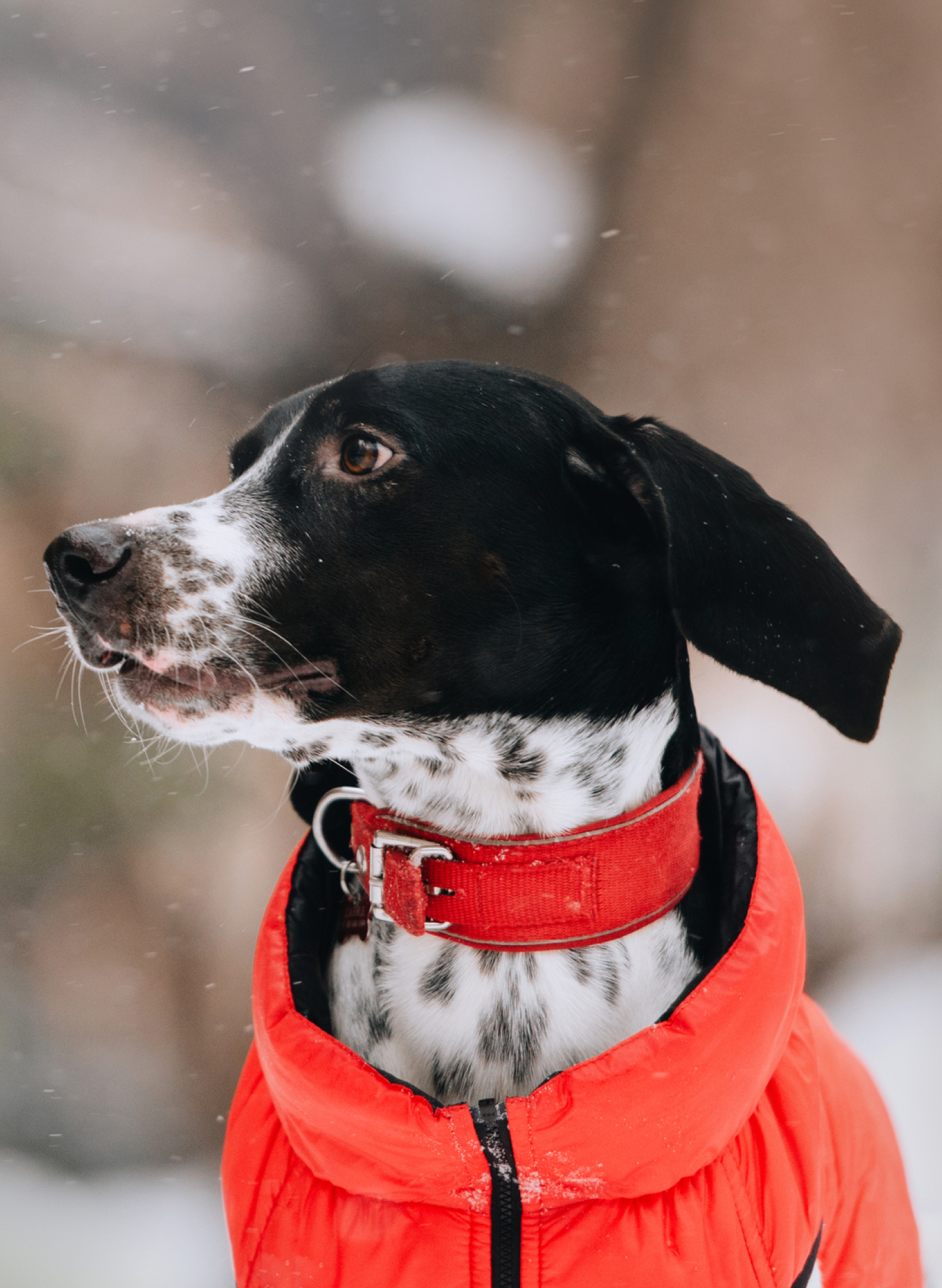Winter Health Advisories for Pets
From snow and ice to skin and paw irritation, keep your pet safe from the winter weather with these tips.

As temperatures wind down and nights get longer, it’s important to stay aware of the ways winter can affect your pet’s wellness. The changing of the seasons can bring new challenges for dogs and cats of all ages and breeds, from exacerbating existing issues to increased risk of specific conditions. With the proper precautions and these tips from our Lovet team, you and your pet can weather another season of snow, ice, and freezing temperatures without breaking a sweat.
How Cold is Too Cold for Dogs and Cats?
As a rule of thumb, you should limit your pet’s outdoor activities if the temperature is below 45 degrees Fahrenheit. Dogs do get cold, just like people. Cats in particular can get very cold very quickly, so it’s important to keep them indoors and off the “catio” through the winter months.
Unlike cats, dogs don’t have the luxury of litterboxes and will need to go outside at least a few times a day in the rain, shine, or snow. Exercise caution and good judgement when you take your pup out, whether that’s for a quick potty break in the yard or a speedy strut down the block. Heads up: without the extra movement and stimulation of regular longer walks, your pup may need additional enrichment to help them stay healthy and happy through the winter.
Your pet’s breed, size, and familiarity with cold weather can influence their ability to withstand the cold. A Husky born and raised in Chicago may hardly bat an eye at a 17° day, while a Sphynx cat from Phoenix may be dangerously cold in 45°. Talk to your Lovet vet before changing your winter routine to get personalized advice based on your pet’s health and breed.
Cold Weather Health Conditions for Pets
Frostbite
Your pet's nose, ears, paws, and tail are particularly susceptible to frostbite, or cold-induced tissue damage, in winter months. Frostbite in pets happens when the skin freezes and turns pale, blue, gray, or black or develops ulcers, can feel cold and brittle to the touch, and is very painful for your pet. If you suspect your pet has frostbite, call your Lovet team right away as it can often present alongside the life-threatening condition hypothermia.
Depending on the temperature and your pet’s breed, frostbite could affect your pet in as little as 15 minutes. Properly fitting boots and coats can help on short outings, but ultimately the best way to prevent frostbite is to limit your time outdoors when the temperatures drop. Remember: if it’s too cold for you, it’s too cold for them!
Hypothermia
Prolonged exposure to the cold can also cause your pet’s body temperature to drop significantly, causing a life-threatening condition called hypothermia. While a cold pet isn’t necessarily hypothermic, hypothermia can progress rapidly if not identified and treated. If your pet is shivering for a prolonged time, is slower than usual or stops moving, has pale gums, or exhibits confusion, call your Lovet team immediately. If your pet suddenly stops shivering or collapses, take them to an emergency vet right away as these are signs of severe hypothermia.
The best way to protect against hypothermia is to keep your pet out of the cold as much as possible. Windy and wet conditions can increase your pet’s chances of developing hypothermia, so be sure to check the “feels like” temperature before heading outside. When in doubt, bring them inside.
Paw Irritation
Salt and other ice melt chemicals can irritate your pet’s paws and, if ingested, can make them sick. Choose pet-friendly options to keep your pet and your walkways safe.
Even if pet-safe ice melt is used, make sure you check and clean your pet’s paws after each outing to clear them of salt, ice crystals, and dirty slush. Consider applying moisturizing jelly or wax to their paws to help protect against cracking and irritation.
Dry Skin
Just like with humans, cold weather can bring on dry and cracked skin in your pet. While longhaired pets might be perfectly comfortable in the cold, a sweater or coat for shorthair breeds can help protect their skin and provide added warmth. (And look super cute and cozy!)
A bath with pet-safe moisturizing shampoo can also help soothe your pet’s skin if irritation occurs. Just make sure they’re totally dry before bringing them out in the cold.
Not Sure? Talk to Your Vet
The changing of the seasons is a great time to get your pet’s annual preventative care done. Cold weather may worsen some medical conditions, and senior and young pets are more susceptible to health changes based on the weather.
Your Lovet team is a great resource for all your wellness worries — winter or otherwise. After a thorough exam, we’ll provide personalized advice for your pet and work with you to come up with a plan for all seasons. Find a Lovet location near you and book an appointment today to get started.
Disclaimer: Not intended to be a substitute for professional veterinarian advice, diagnosis, or treatment. Always seek the advice of your veterinarian with any questions you may have regarding the medical condition of your pet. If you think your pet has a medical emergency, call or visit your veterinarian or your local veterinary emergency hospital immediately.

